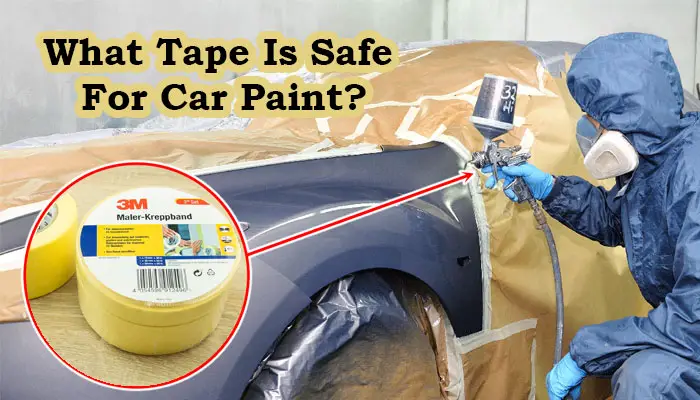Is It Safe To Drive With A Bad Camshaft Sensor? How You Can Replace A Camshaft Sensor?
- By Infoik
- 10 Apr, 2022

Is It Safe To Drive With A Bad Camshaft Sensor?
What do you do when your car starts making strange noises? If you’re like most people, you take it to a mechanic to find out what’s wrong. But what if you can’t afford to have your car towed or fixed? This article will discuss the symptoms of a and explain how to drive with one. We’ll also offer some tips on fixing a yourself. Keep reading for more information!
What is a and what does it do?

A is a small electronic device that monitors the of the . It tells the computer when to fire the spark plugs and inject into the cylinders. A can cause several problems, including:
* misfires
* Rough idle
* Reduced economy
*
If you notice any of these symptoms, it’s important to take your car to a mechanic as soon as possible.
Signs that you may have a

There are a few signs that you may have a . If your car starts making any of the following noises, it’s a good idea to take it to a mechanic:
* Knocking noise from the
* Rattling noise from the
* Pinging noise from the
These noises indicate that the is not running smoothly and that the may be to blame.
How to replace a ?

If you suspect that your is bad, the best thing to do is take your car to a mechanic. They will be able to diagnose the problem and replace the for you.
However, if you’re feeling adventurous, you can try replacing the yourself. The process is relatively simple and only requires a few tools.
First, you’ll need to locate the . It’s usually located near the top of the , on the side of the cylinder head. Once you’ve found it, disconnect the electrical connector and unscrew the .
Next, take the new and screw it into place. Then, reconnect the electrical connector and start your . The should go off if the is working properly.
If you’re still having trouble, we recommend taking your car to a mechanic. They’ll be able to help you troubleshoot the problem and get your car back on the road in no time.
What are the possible consequences of driving with a ?

If you notice any of the symptoms of a , it’s important to take your car to a mechanic as soon as possible. Driving with a can cause several problems, including misfires, rough idle, reduced economy, and a . In some matters, it can even lead to damage. So if you suspect that your is bad, don’t hesitate to take your car to a mechanic. They’ll be able to diagnose the problem and replace the for you.
FAQs:
What happens if you don’t fix your ?
If you don’t fix your , the symptoms will continue to be present. The sensors usually last for 6,000 to 10,000 miles before they need to be replaced. If you drive your car a lot a lot, or if it’s partly driven when you’re not in the car, you could be driving with a for as long as your car keeps making this noise.
If you think you’ve got a , take it to a mechanic and have it checked out. He’ll be able to tell you the chances of a and give you a ballpark figure on the cost of fixing it. You don’t have to take his estimate seriously, but do keep it in mind if you’re considering buying a car or truck and want to make sure you’re up-to-date on the state of its and its electrical system.
How serious is a ?
A common misconception about sensors is that they’re very expensive to repair. They’re quite cheap to repair. The $300 price of the doesn’t include the labor cost. The needs to be re-greased, and the car needs to be driven with the cruise control set to a higher speed. If the is the one that’s causing the problem, the car should still be able to drive just fine.
However, if the is a part of the itself, it probably needs to be replaced. This can be a very costly repair depending on the make and model of your car. People often recommend replacing their sensors every 6,000 to 10,000 miles. However, it’s important to know that this is a very conservative estimate. It’s hard to know until you’ve driven your car for longer times.
Can a car run without a ?
One of the reasons you should replace your every 6,000 to 10,000 miles is that you won’t run the risk of damaging your . Without a , you risk damaging your through excess heat, exhaust backpressure, and harmful carbon monoxide if you drive your car without a .
If you want to minimize these risks, it’s best to drive your car without a . However, keep in mind that you won’t be able to use your cruise control or your ABS brakes. You’ll just be driving around without any safety features that come standard with many car brands these days.
Can a cause a transmission problem?
Transmission problems may sound a little scary, but don’t worry. It’s not a very serious problem. Other symptoms would accompany a transmission problem. A transmission that doesn’t shift out of first or second gear would be very difficult to repair. It would probably just need a parts car to get it running again. However, if your car shifts out of first or second gear but won’t accelerate after that, you may have a problem. It’s probably safe to drive with a since you won’t have a transmission problem.
What happens if you unplug the ?
One of the reasons why you should replace your when it’s supposed to be replaced is so that you don’t drive with a faulty one. If you exit your car running with the battery disconnected, the will be left unplugged. The will still produce torque when the timing is off, but it will only go into gear when the battery is connected. You may experience lots of squealing from the tires or a rough idle if this happens. It’s best to unplug the when you’re not driving.
How much does it cost to replace a ?
The price of a varies depending on which one is at fault. If the problem is a faulty , the cost of the sensors will likely be similar. If the problem is with the itself, the price will be much higher. It’s important to know the exact cost of fixing a problem since it’ll help you plan if you need to replace a sooner. Of course, if you’re fixing the problem yourself, you don’t have to worry about having enough money to fix the problem.
Do you have to replace both sensors?
When you buy a car, you typically buy the and the motor parts inside the car. However, if one goes bad, you should replace both. This will ensure that you don’t have a faulty or any other problem that would cause a transmission problem. If you buy a car used, likely, the seller didn’t change the when the car was new. In this case, you may want to use the cheaper replacement belt that came with the car. However, if you buy a new car, you should also buy a replacement since it’ll likely be defective.
How long does it take to replace the ?
The length of time it takes to replace a single depends on many factors. The absolute minimum time to replace a single is between 8,000 and 10,000 miles. However, it would help if you didn’t try to drive your car for longer distances without a . It would help if you also tried to drive your car less while waiting for the to arrive so that you don’t overdrive the . If you drive your car more often, you could damage the .
How do you fix a ?
Replace the failed . You can replace the yourself or have it replaced by an authorized dealer. When you replace the , make sure that you unplug the electrical connector from the so that you don’t damage the wiring. After the is replaced, re-grease the and drive your car for a few miles to make sure that the noise from the has stopped. If the noise from the has stopped, then your is fine, and you don’t have to worry about it anymore.
The conclusion: .
Driving with a is not ideal, but it is doable. You may experience noise or a rougher idle, but the car should still be drivable. However, it is best to replace the as soon as possible to avoid any potential damage. Replacing a is relatively easy and can be done yourself or by an authorized dealer. Ensure to unplug the electrical connector from the before replacing the to avoid damaging the wiring. After replacement, re-grease the and drive for a few miles to make sure the noise has stopped. If it has, your is fine, and you don’t have to worry about it anymore.












